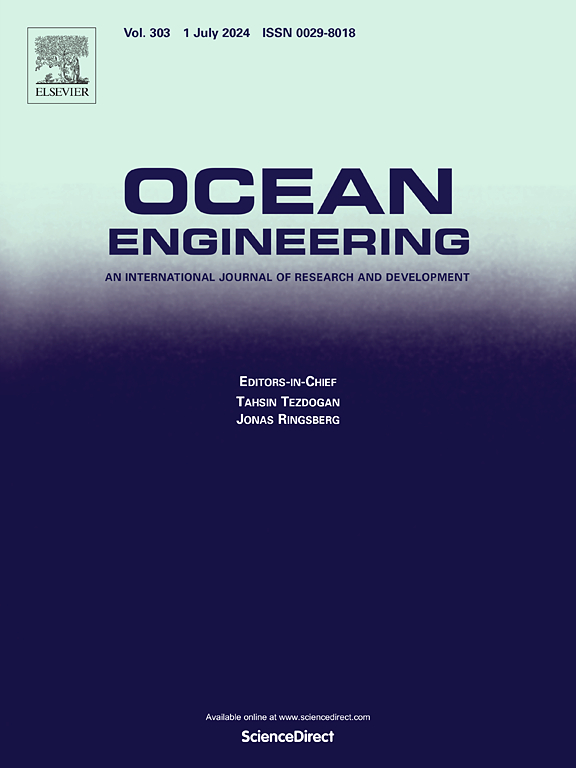脉动工况下水平轴潮汐水轮机额定功率运行转速预测
IF 4.6
2区 工程技术
Q1 ENGINEERING, CIVIL
引用次数: 0
摘要
在实际海况下,浮动式水平轴潮汐发电装置(FHATPD)将经历六自由度(6-DOF)的波浪运动响应,导致水平轴潮汐涡轮机(HATT)的相对入流速度发生变化。如果HATT保持恒定的旋转速度,其流体动力载荷将随着支撑结构的六自由度运动而波动。因此,为了保证FHATPD的稳定和安全运行,可以控制HATT的转速。转速控制的目的是使HATT在其规定的额定功率下运行。首先,利用建立的计算流体力学方法计算了不同叶尖速比下HATT的脉动运动和变速旋转的功率系数。随后,建立了基于多层感知器(MLP)的转速预测模型,并利用基于cfd的方法对预测结果进行了验证。通过调整特征参数、补充训练数据、平滑突变曲线等方法改善了MLP模型的训练效果。最后,建立了HATT在额定功率下的转速预测模型。这些结果可为FHATPD的稳定性和效率提供有价值的参考。本文章由计算机程序翻译,如有差异,请以英文原文为准。
Rotational speed prediction for rated power operation of a horizontal axis tidal turbine under surging motion conditions
Under actual sea conditions, a floating horizontal-axis tidal power device (FHATPD) will experience a six-degree-of-freedom (6-DOF) wave-induced motion response, resulting in a change in the relative inflow velocity to the horizontal-axis tidal turbine (HATT). If the HATT maintains a constant rotational velocity, its hydrodynamic loads will fluctuate with the 6-DOF motion of the supporting structure. Consequently, to ensure the stable and safe operation of the FHATPD, the rotational speed of the HATT can be controlled. The purpose of rotational speed control is to enable the HATT to operate at its stated power rating. First, the power coefficient is calculated for different tip speed ratios using the established computational fluid dynamics (CFD) method for the surging motion and variable-speed rotation of the HATT. Subsequently, a rotational speed prediction model is established based on a multilayer perceptron (MLP), and the prediction results are verified by a CFD-based method. The training of the MLP model is improved by adjusting the feature parameters, supplementing the training data, and smoothing the mutation curves. Finally, the rotational speed prediction model of the HATT operating at rated power is obtained. These results can be a valuable reference for the FHATPD's operational stability and efficiency.
求助全文
通过发布文献求助,成功后即可免费获取论文全文。
去求助
来源期刊

Ocean Engineering
工程技术-工程:大洋
CiteScore
7.30
自引率
34.00%
发文量
2379
审稿时长
8.1 months
期刊介绍:
Ocean Engineering provides a medium for the publication of original research and development work in the field of ocean engineering. Ocean Engineering seeks papers in the following topics.
 求助内容:
求助内容: 应助结果提醒方式:
应助结果提醒方式:


